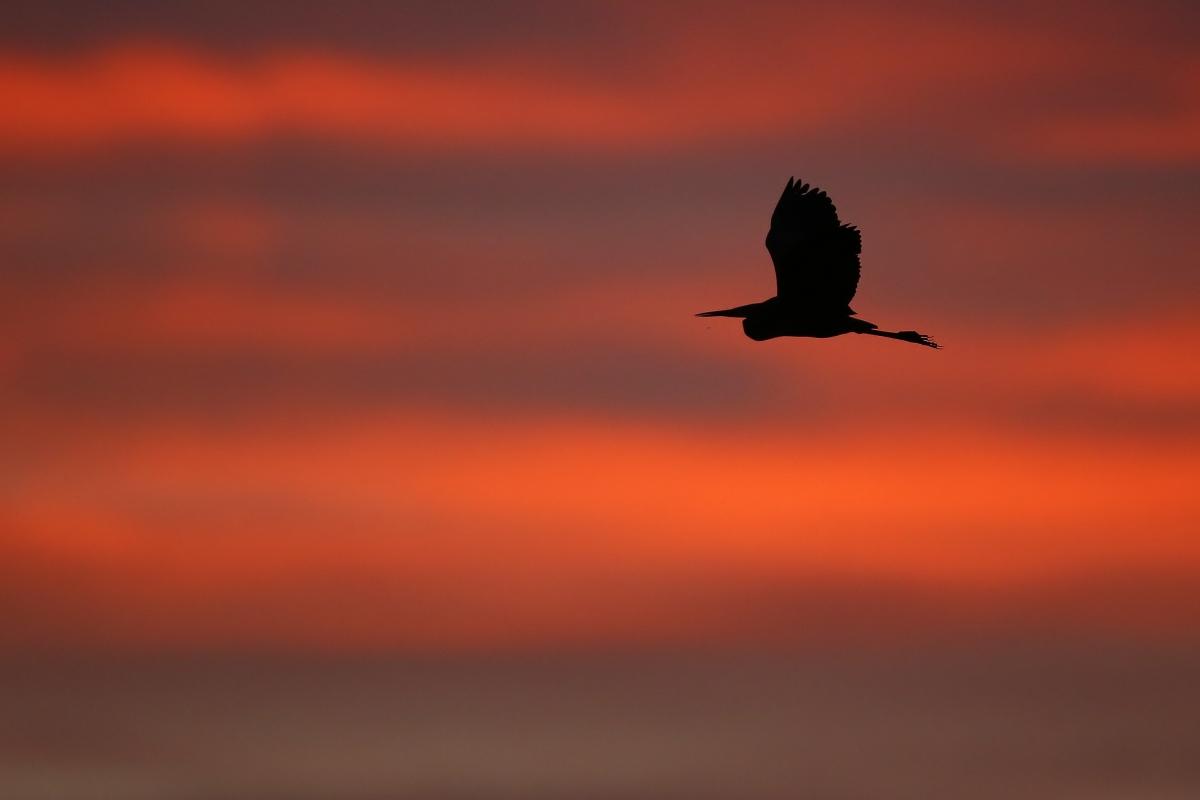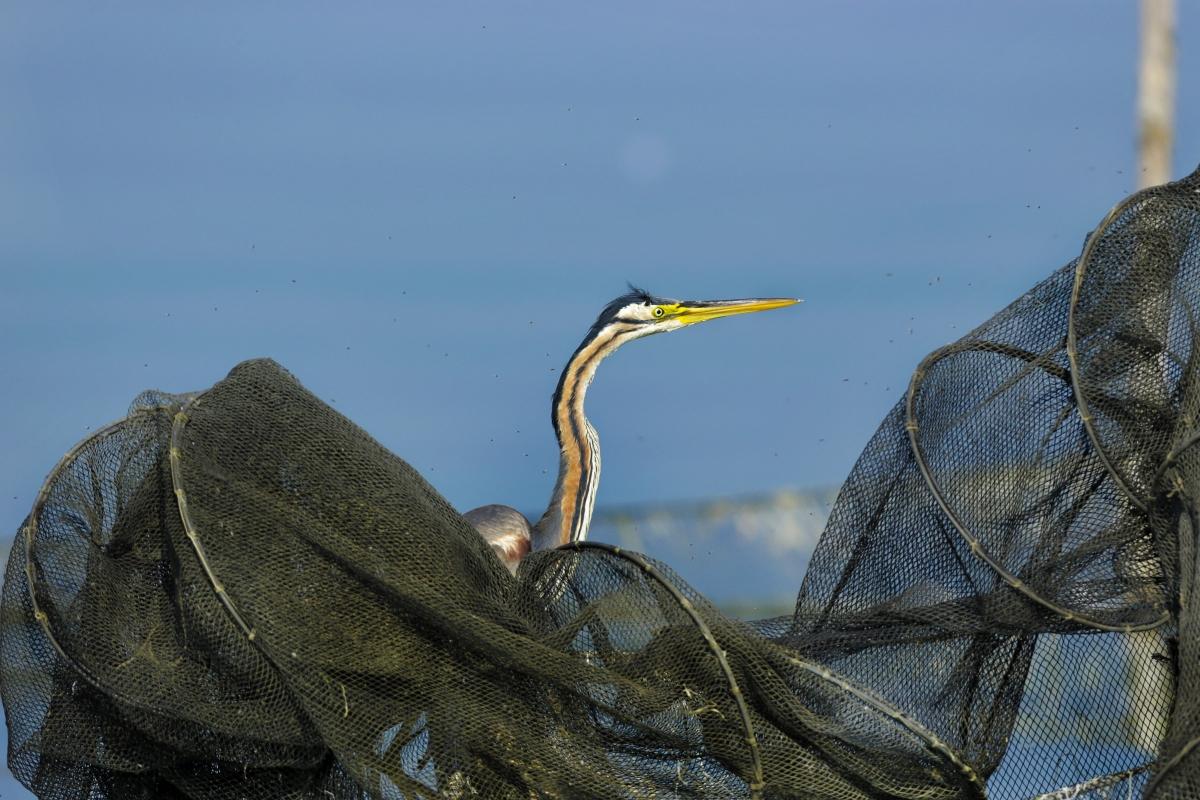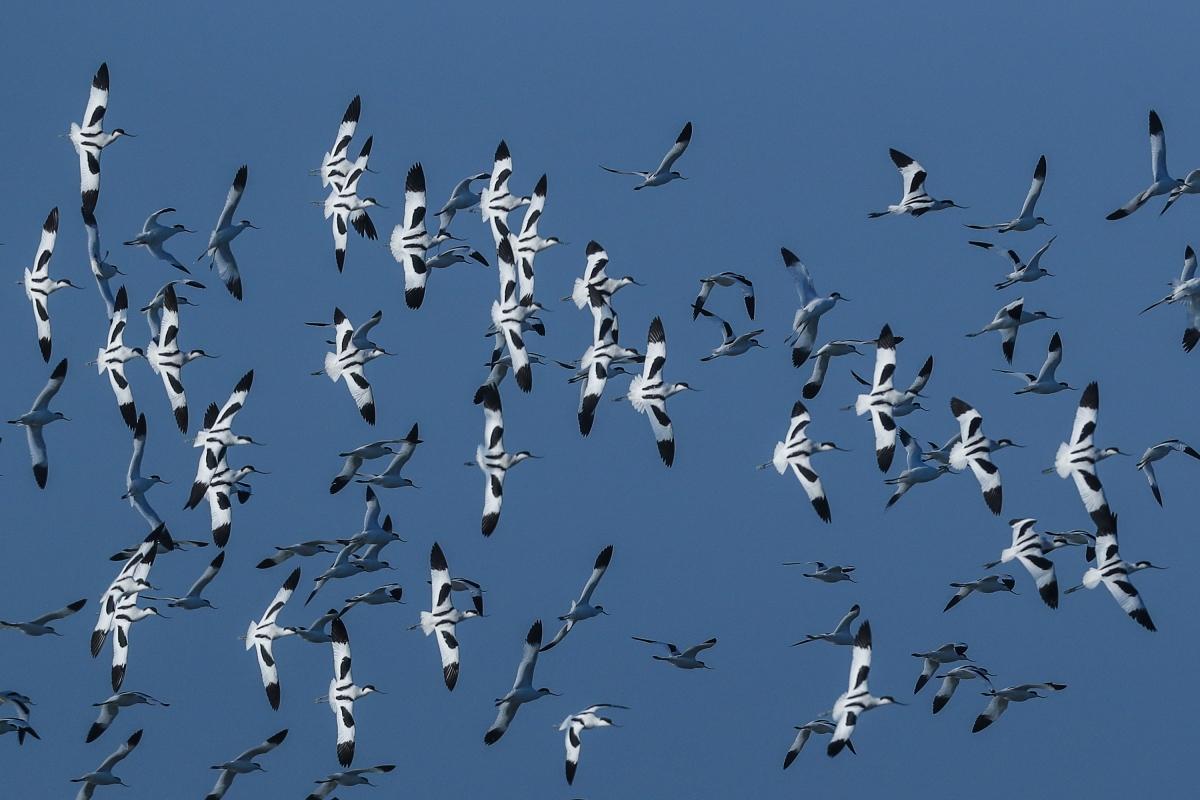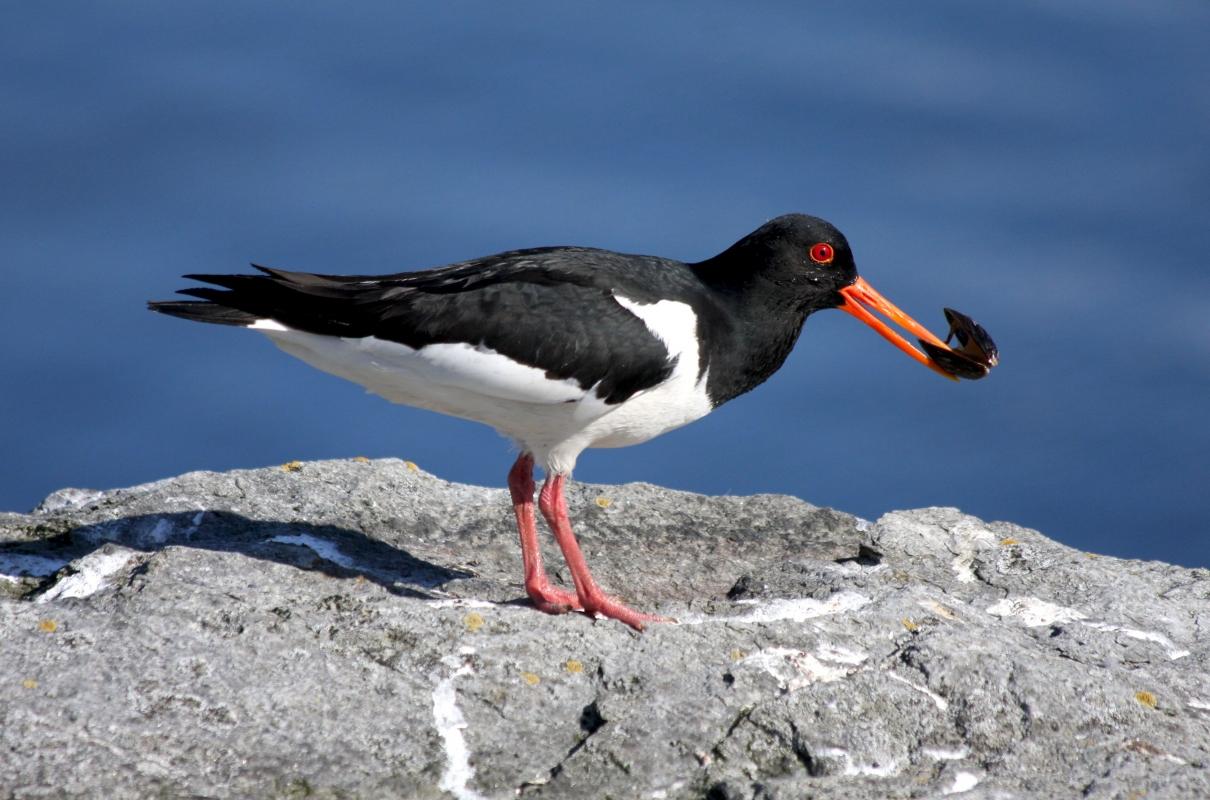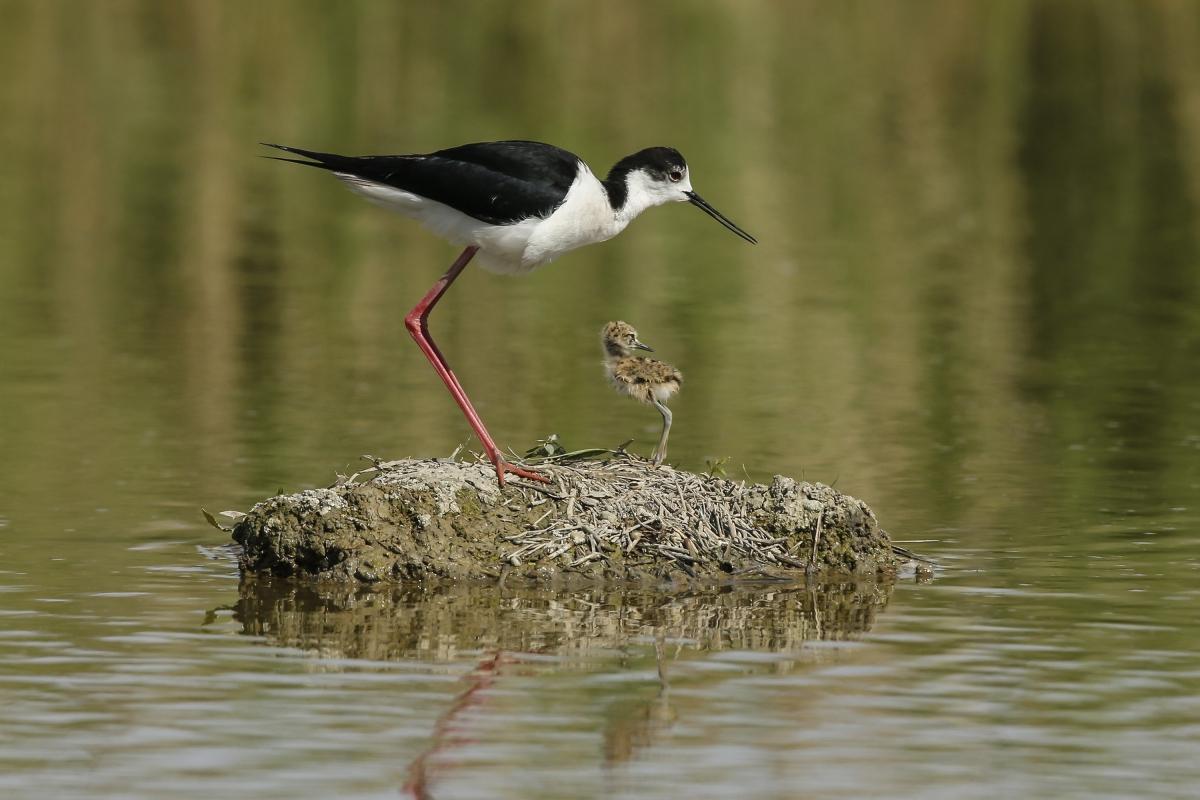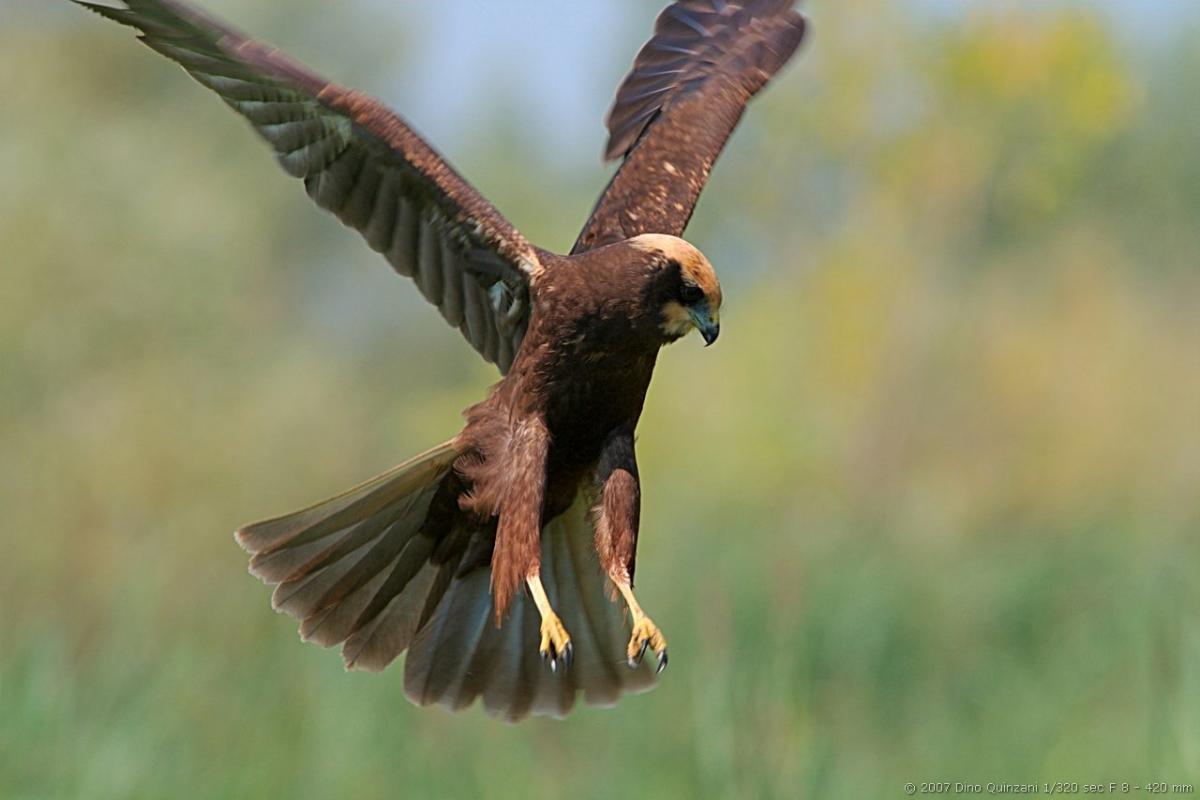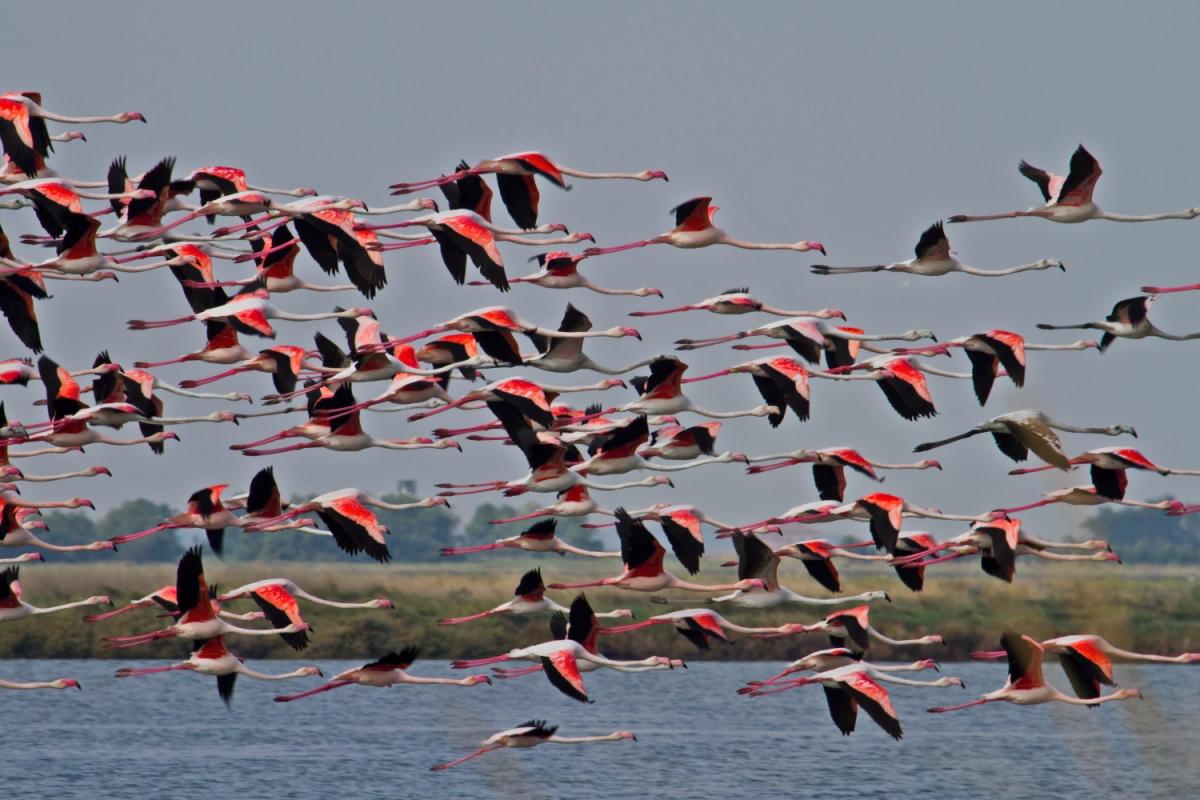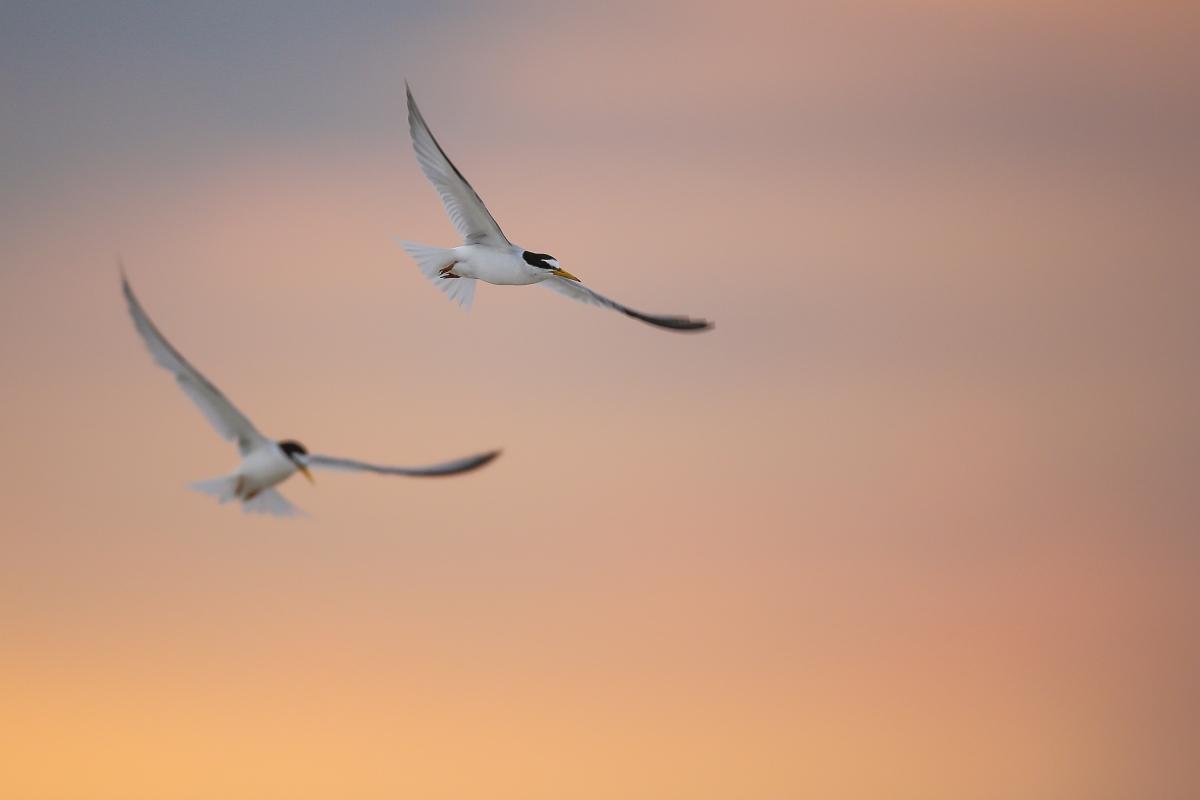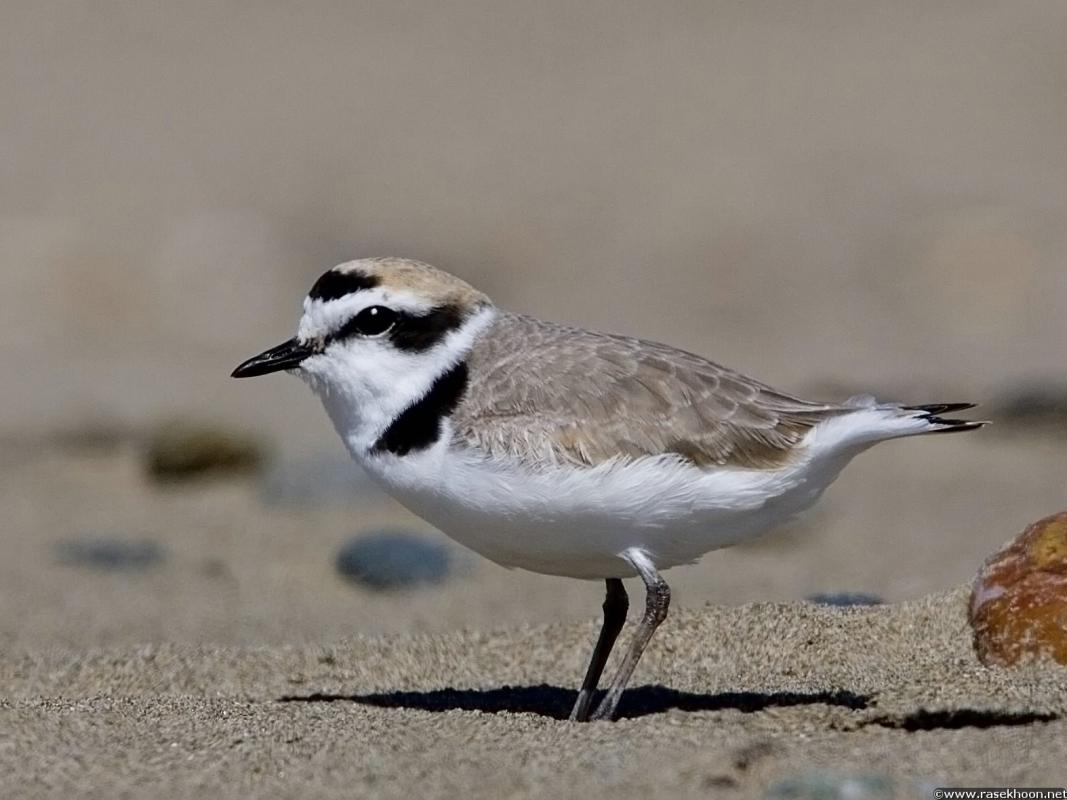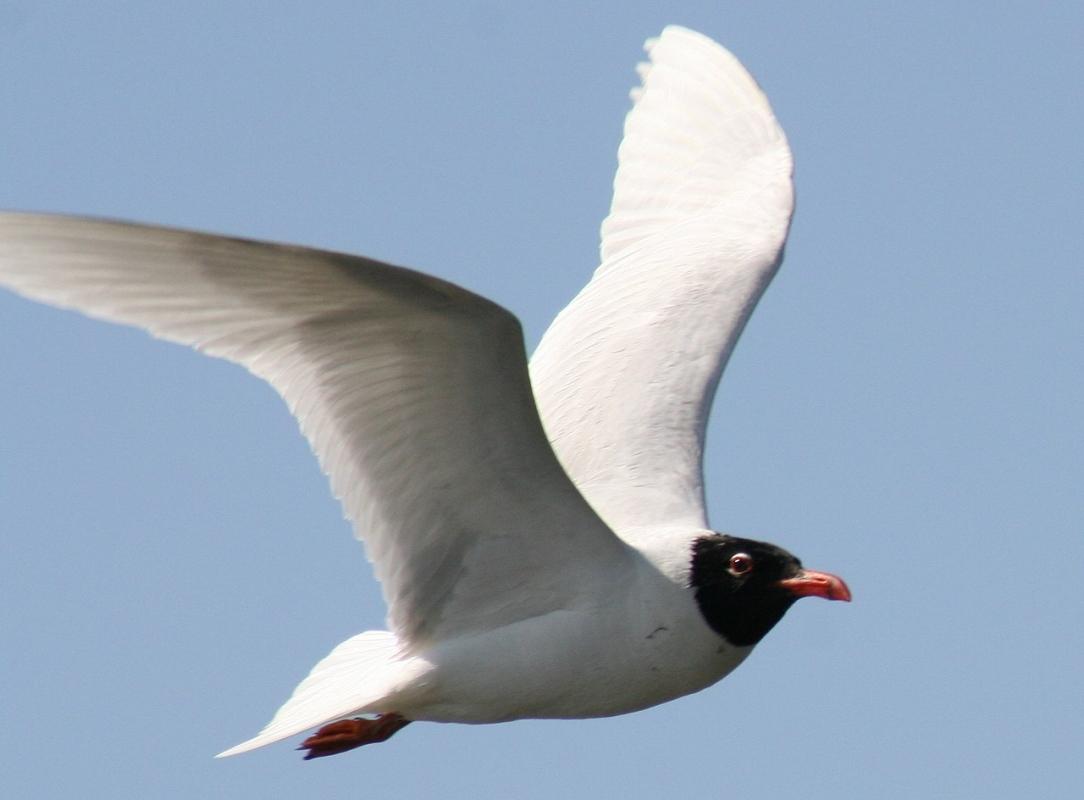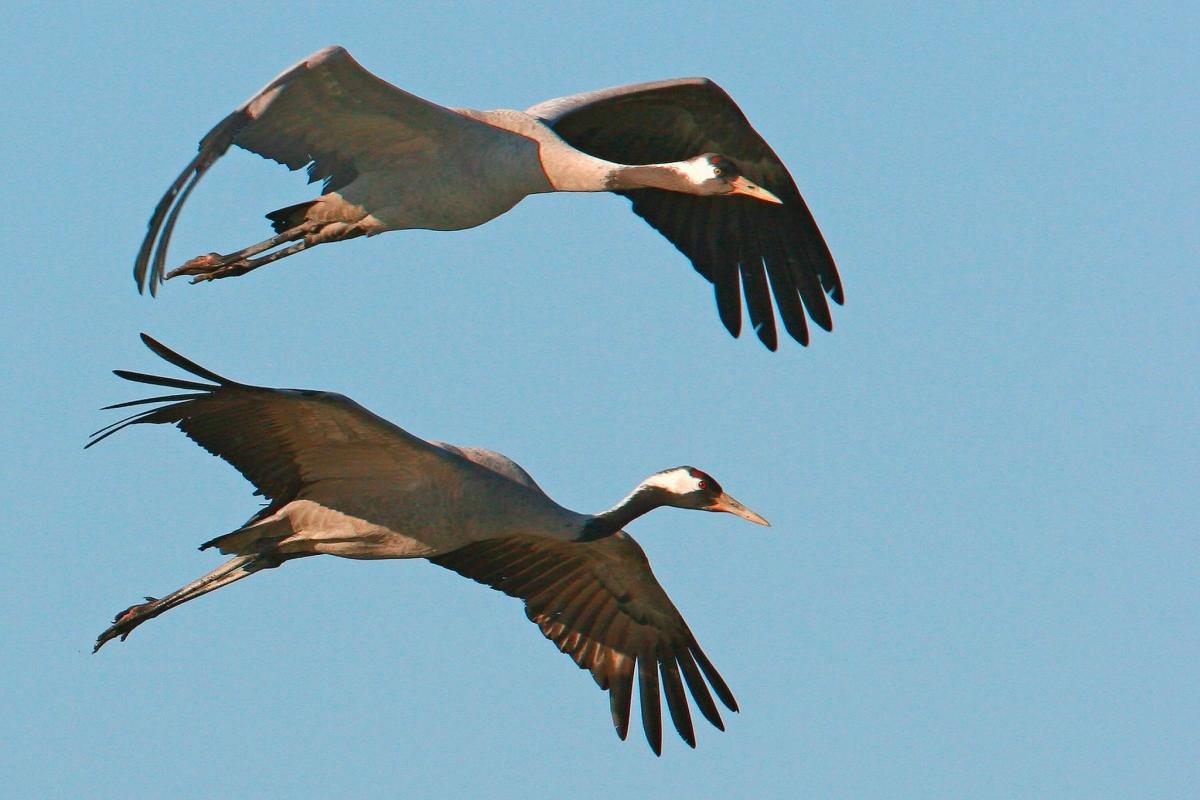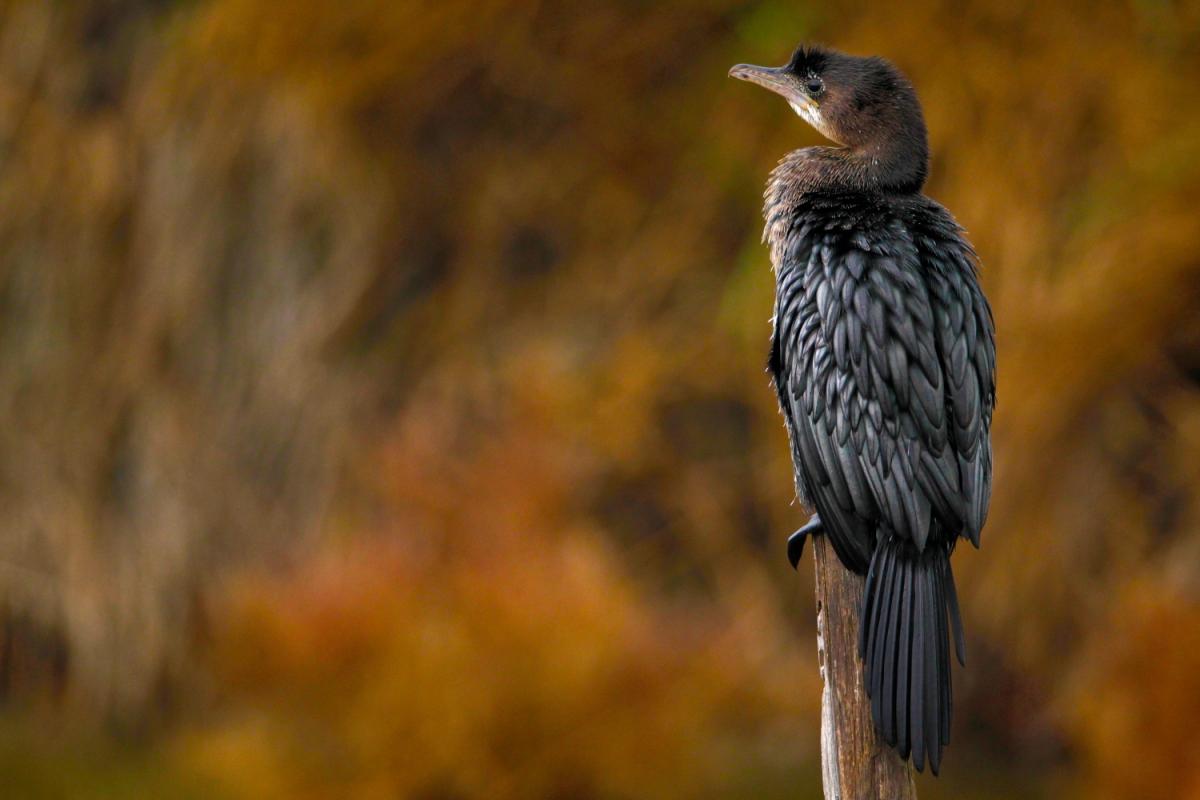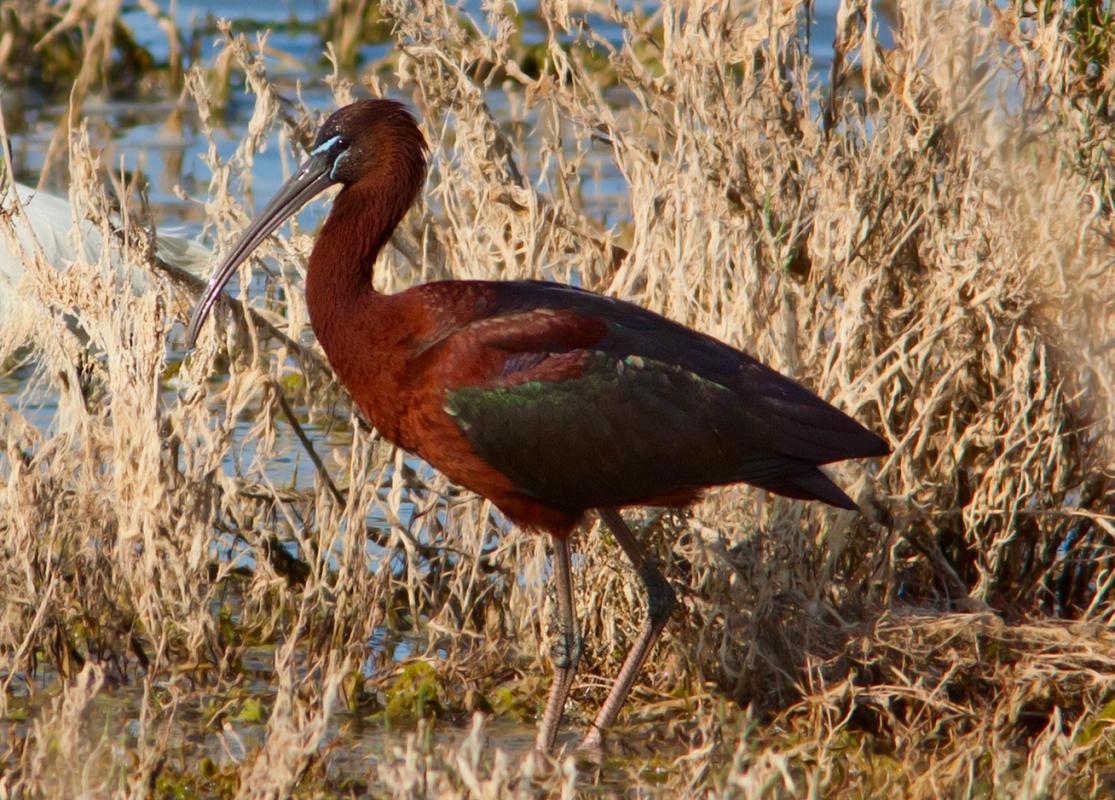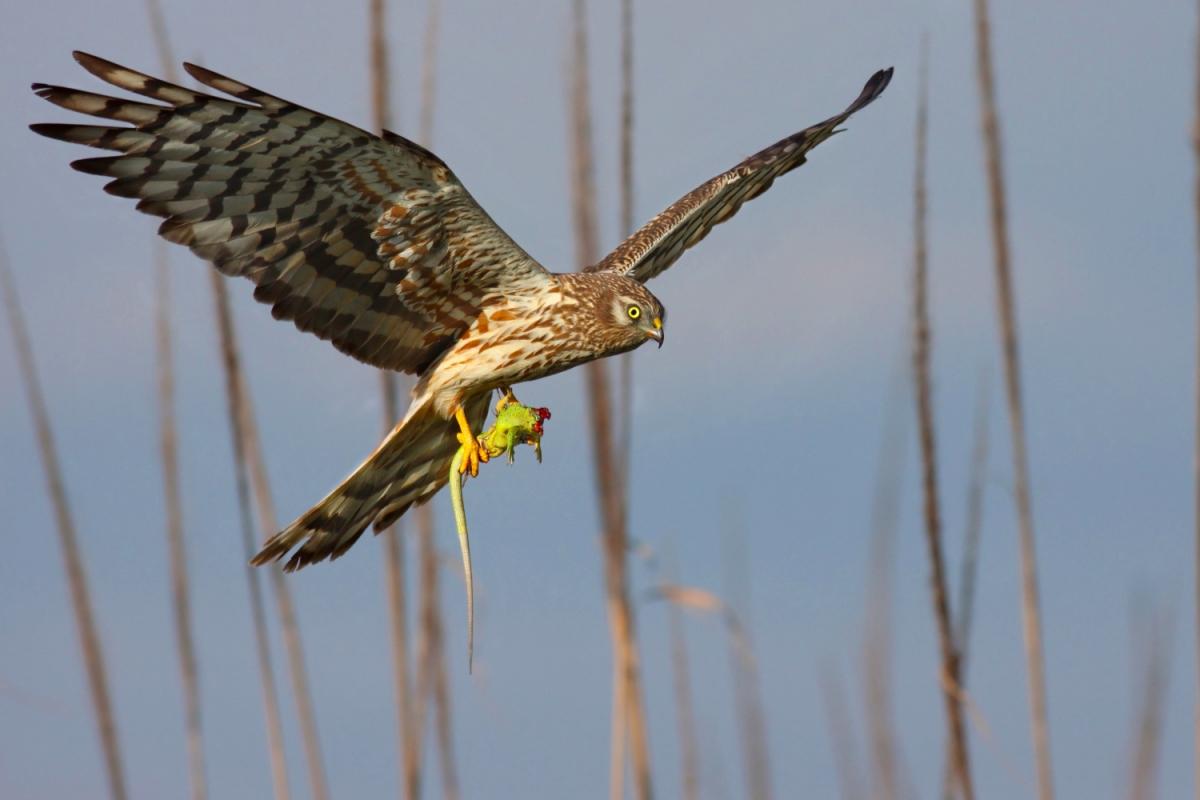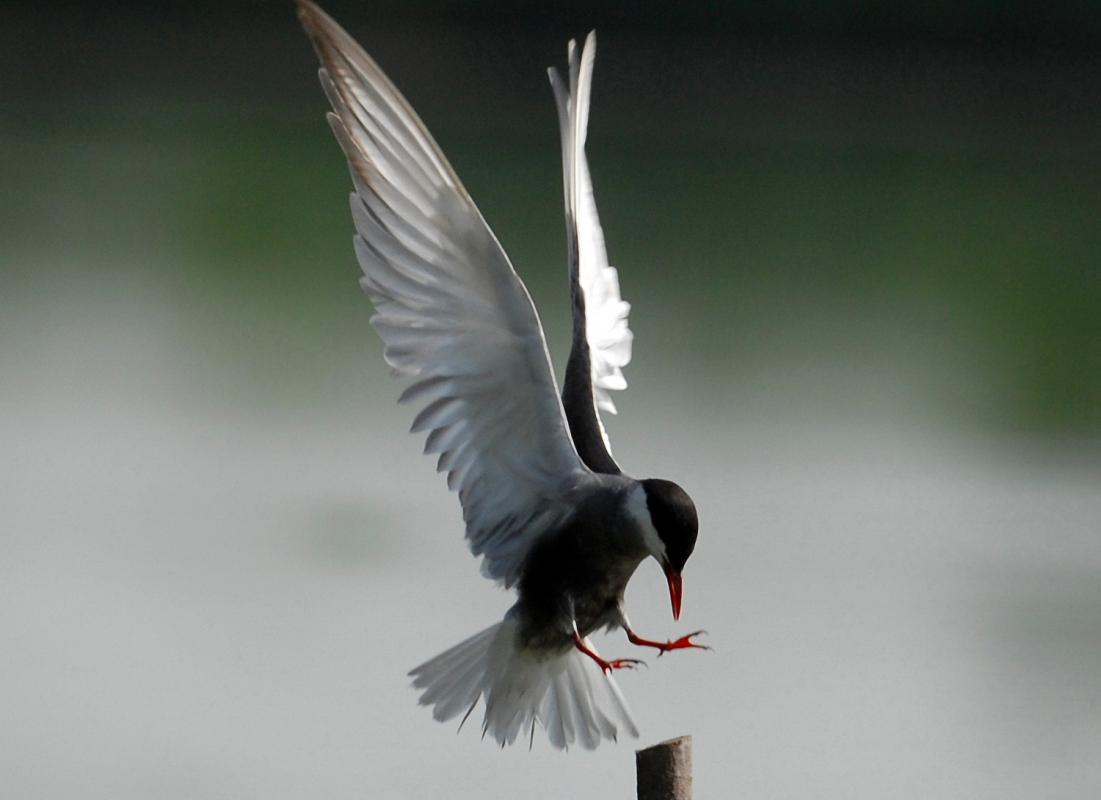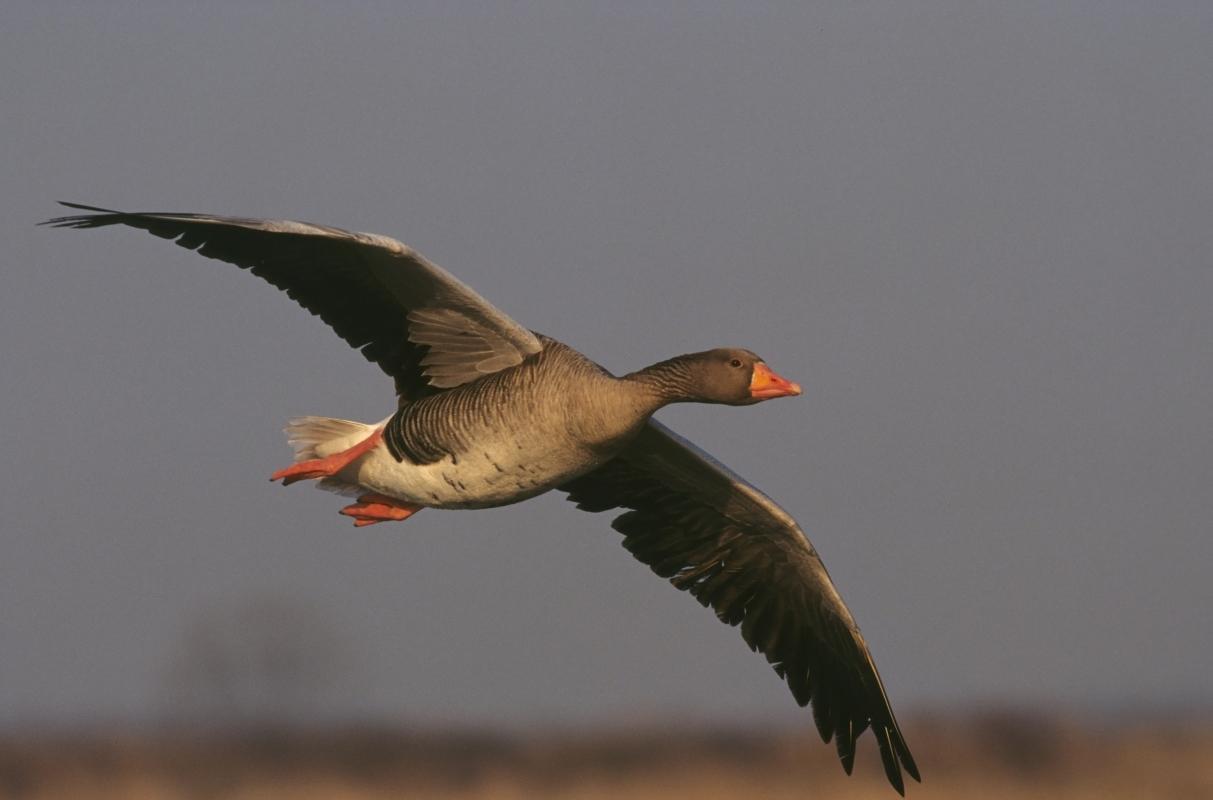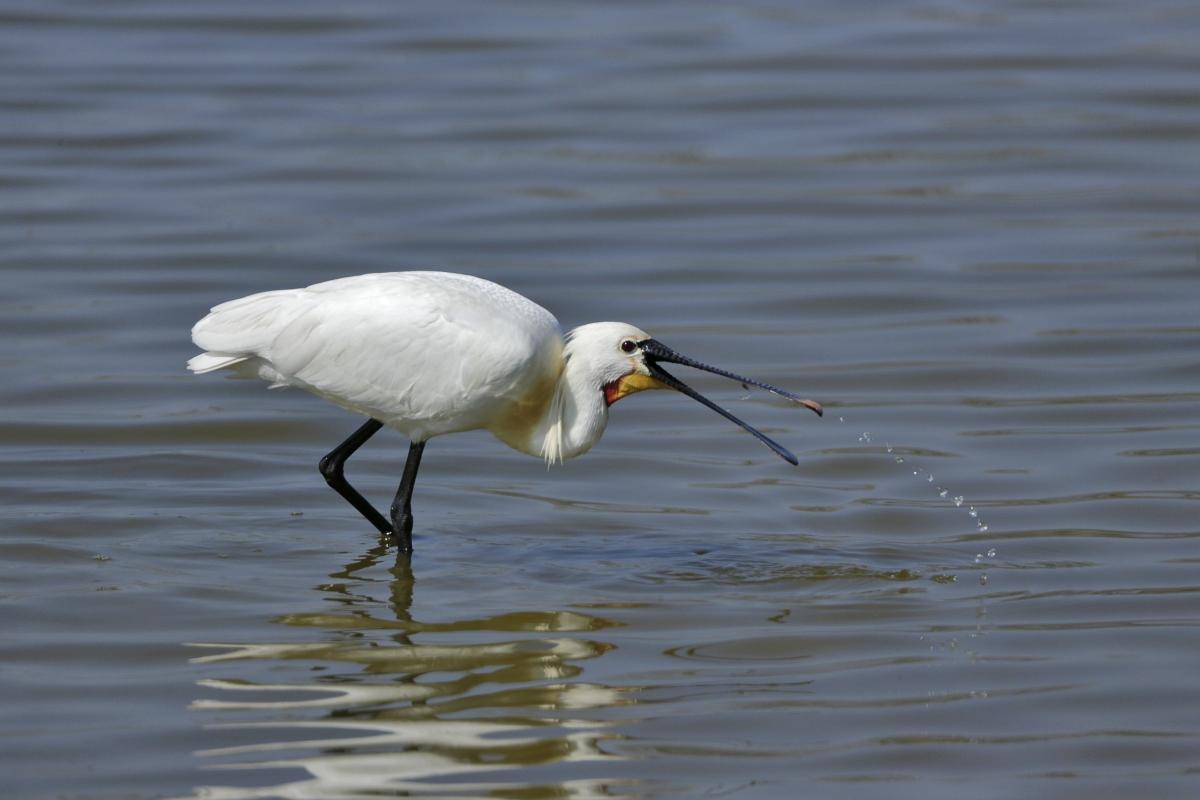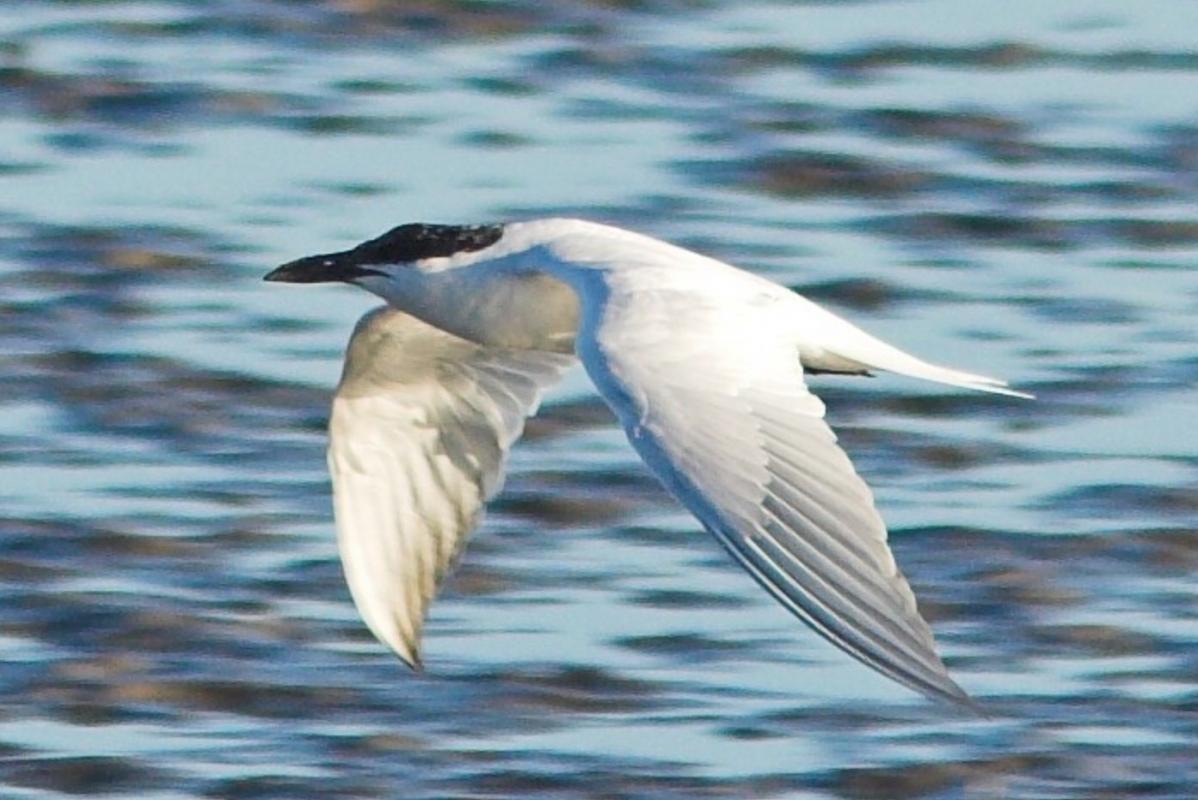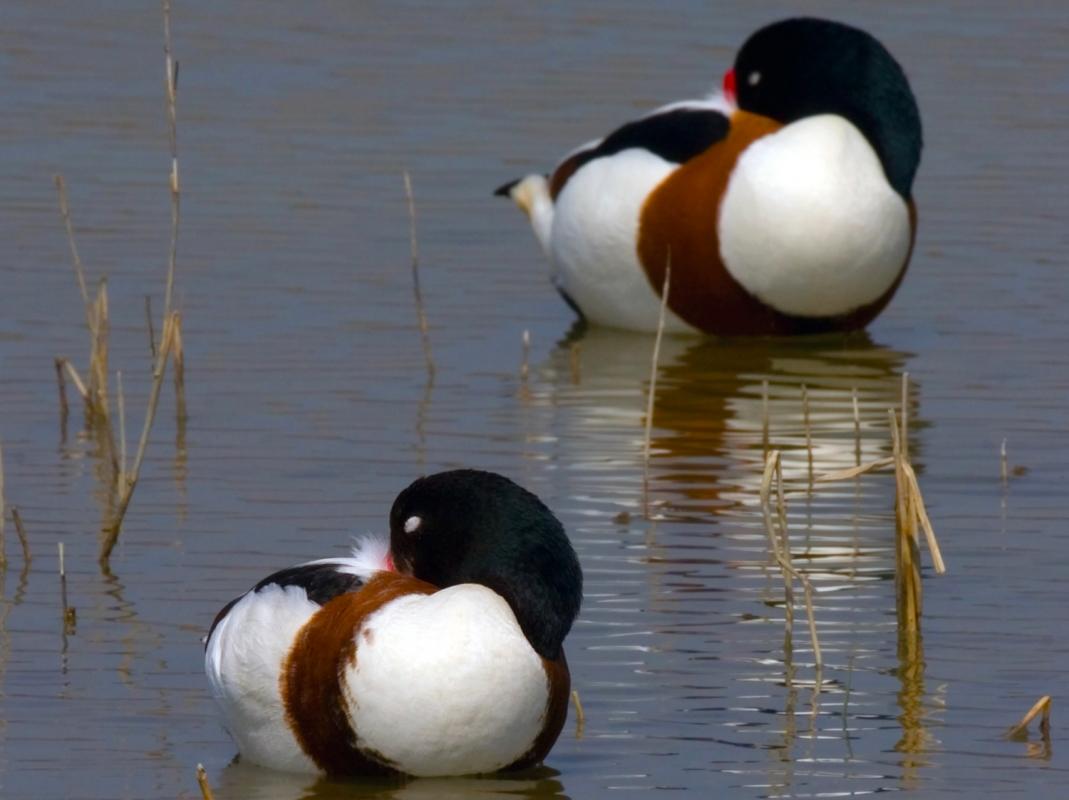OUR SPECIES
GREAT EGRET
Rare and localised species. The breeding and wintering population in the Delta is on the rise. Breeds between mid-April and June. Winters and stops predominantly in large salty wetlands, but also frequents smaller swamps and drained farmlands. It is easily observable throughout the year, especially in the southern fish basins of Comacchio, along the branches of the Veneto Delta basins, in Sacca di Scardovari and Bottonera, from the banks of the Reno river between Sant’Alberto and the Primaro Pass. During breeding periods it concentrates in the heronries of Valle Campotto, Valle Santa and Valle Mandriole, observable from the tower located next to the bridge that crosses Lamone river. During the winter the species is present in all the brackish basins and lagoons, where it is sometimes gathered in large numbers and even in open agricultural areas.
PURPLE HERON
Species in decline and localised. Breeds between late April and June, in various colonies situated in all the main and largest reed groves of the Po Delta, in addition to some couples isolated in smaller reed beds. It always visits the reed groves. It is easily observable in spring and summer among the reed groves in which it breeds (Valle Dindona, Valle Gorino, the mouth of the Po di Goro, the mouth of the Po di Volano, the mouth of the Po di Gnocca, Po di Maistra, Ca’ Cornera, Volta Grimana, Valle Morosina di Rosolina, Taglio della Falce, Val Campotto, Valle Santa, Valle Mandriole) and in their vicinity, often along the drainage canals with reeds and sometimes also in the nearby agricultural areas.
PIED AVOCET
Localised but stable species. During migration it arrives at the brackish water wetlands in flocks that at times are quite numerous (more than 500 specimens), and it often winters there with some thousands of specimens concentrated in the fish basins and salt pans. It breeds between April and July, in all major basins, saltwater and brackish lagoons, rises, temporary muddy areas and salt pans. It also breeds on sand bars. Easy to observe in all the wetlands where it breeds, but particularly abundant in wet areas where it also stops during migration (March to April and mid-August to mid-October) and in winter: Valle Ca’ Pisani, Valle Bagliona, Valli di Boccasette, Sacca di Scardovari, Valli Bertuzzi, Valli di Comacchio (Salina di Comacchio, Boscoforte, Valle Furlana, Valle Zavelea), Ortazzo, Salina di Cervia.
EURASIAN OYSTERCATCHER
Species in numeric expansion. Breeds on sandy beaches and sand bars, but also on the emerged shoals of the fish basins, on ruins and recently even on the islands of the Po, between April and June. In the Northern Delta it can be seen virtually everywhere there is salty or brackish water. Among the best sites are Boccasette, Batteria-Burcio, Sacca di Scardovari and Bottonera, Caleri. In the southern Delta, the most likely place to find it is on the Goro sand bar. Observation is also possible at other beaches, especially at the Volano sand bar, at the mouth of the Reno (south of Lido di Spina) and at the mouth of the Bevano (north of Lido di Classe), as well as in some brackish wetlands like Valli Bertuzzi, Valli di Comacchio, Vene di Bellocchio, Pialassa della Baiona, Ortazzo, Salina di Cervia. Occasionally it also frequents artificial reefs at the seaside.
BLACK-WINGED STILT
Widespread and stable species. Breeds in all wetlands with shallow water, even small and artificial ones. During migration it stops in all wetland areas with shallow water, usually in flocks, but sometimes with numerous groups. It breeds between April and July, in all wetlands with salty or fresh shallow water and with emerging muddy expanses and sparse vegetation or with rises surrounded by marshes. Stops at all wetlands with shallow water. Occasionally some will winter in the fish basins of Comacchio. It is very easy to observe in the wetlands where it breeds, including small clearings in agricultural areas, both during the breeding period and during migration, especially during the pre-breeding journey (mid-March to April). It is particularly interesting to watch breeding couples from the huts of the Salina di Cervia or along the banks of Valle Bagliona.
WESTERN MARSH HARRIER
Species found among the Delta reed groves, in fish basins and lagoon reeds between April and June. Winters and feeds in the same wetlands. The species is easily observed at the sites where it breeds, where from March to June one can watch breeding rituals, from the spectacular flights of courtship to the hunting sorties of the males as they feed first the brooding females and then the chicks in the nest. The best areas for observation are the Po di Maistra, Valle Morosina, Valle Ca’ Pisani, Valle Zavelea, La Scorticata, Valle Santa, Valle Mandriole, Ortazzo. During migration (March-April and September-October) many small groups circle or stop in the large wetlands of the Delta.
GREATER FLAMINGO
Localised species, breeding only in the Salina di Comacchio, between March and July, on rises or low banks. It stops and feeds in brackish marshes, in the fish basins and salt pans. It is easily observable throughout the year. The best sites are the Salina di Comacchio, Valle Cona (also along the boat route from Foce station) and the southern basins of Comacchio; also from the Acciaioli road that runs along the Valli Bertuzzi, from the area around the Salina di Cervia visitors centre and from the roads that run along this wetland. In winter it is concentrated in the Valli di Comacchio and the Salina di Cervia. As for the Venetian Delta, it is observable throughout the year from the road that runs along the Valli di Rosolina, in particular at Albarella. Other excellent sites for observing even thousands of birds at a time are Valle Bagliona and Valle Ca’ Pisani.
LITTLE TERN
Localised and declining, it breeds between May and August in salt pans, natural beaches, temporary muddy areas, rises without vegetation in the lagoons and brackish basins, fish and hunting basins and Delta sand bars. The species even migrates twice, both in the basins and along the coast. Relatively easy to observe although it is not as common as in the past, when thousands of couples nested on the beaches of the Delta and in the brackish basins. It can be observed in spring and summer on the sea, near the beach. The wetlands where it is easier to observe are Sacca di Scardovari, the Boccasette area, Sacca di Goro (cycling path along the northern embankment), Valli Bertuzzi (from Acciaioli road), Valli di Comacchio (southern embankment, Valle Zavelea turret, Salina di Comacchio), Pialassa della Baiona and Salina di Cervia, where from the shielded area it is possible to observe a small colony.
KENTISH PLOVER
The breeding population is in sharp decline due to the continued spread of seaside tourism. In winter the species is concentrated on the sand bars of the Delta and in the salt pans. It breeds between April and June on beaches and dunes, rises devoid of vegetation in brackish lagoons, salt pans, fish basins. It winters and stops in the same environments in which it breeds. The breeding season can be observed, with a little attention, on natural beaches like the sand bars of Batteria, Cavallari, Sacca di Scardovari, Scanno di Goro, Scanno di Volano, the mouth of the Reno, the mouth of the Bevano, but also, sometimes, among the beach establishments. In spring it also shows up at the Salina di Comacchio and Salina di Cervia and other brackish wetlands (Valli di Rosolina, Porto Viro and Porto Tolle, Valli Bertuzzi, Valli di Comacchio, Sacca di Bellocchio, Pialassa della Baiona, Ortazzo). In winter it is observable at the Scanno di Goro and in salt pans.
MEDITERRANEAN GULL
Vulnerable, localised. It breeds between May and July, usually in large colonies on rises or embankments. The colonies move every year in search of the most suitable sites in different basins and salt pans. In winter a few dozen specimens visit the beaches. It is easily observed in spring and summer, not only in the wetlands where it breeds, but a bit everywhere in the Delta, including agricultural areas used for feeding. The return of large flocks from their winter quarters is spectacular, announced by their characteristic and appealing call. The areas where it is easiest to observe the species are the roads along the basins of Rosolina and Porto Viro, Sacca di Scardovari (especially in summer with the concentration of thousands of specimens among the fields and “peociare” or wooden poles), Valli Bertuzzi (from the Acciaioli road), Valli di Comacchio (southern bank), Salina di Cervia (from the Salina tour route).
COMMON CRANE
Rare species, but rather abundant in recent years as it winters in the drained areas of Mezzano and in the nearby Valle Zavelea. During migrations it can also be observed elsewhere, always in open grassland areas. In winter, the species can be observed in the northeast corner of the drained Mezzano, including the northernmost bridge that enters the area and the Fosse-Foce drainage, as well as in the nearby Valle Zavelea, used as a nocturnal sleeping area.
PYGMY CORMORANT
Rare species in the past, now on the rise. It breeds between April and June in various colonies, in woods and hygrophilous and riparian lowland thickets, with flooded undergrowth. It also breeds in the lagoon and brackish environments, like inside the fish basins.It is a species that is easily observable throughout the year, especially in the marsh complex of Punte Alberete and Valle Mandriole, but now practically everywhere, including large saltwater basins (especially Pialassa della Baiona and Valli di Comacchio). It recently formed breeding colonies at the Po di Maistra, Po di Venezia, Batteria and Valle Morosina. The nocturnal roosting of thousands of birds at Oasi Valpisani is truly spectacular.
GLOSSY IBIS
Extremely rare and vulnerable species, localised. Consistently visible in just one breeding site, with a very low number of couples. Breeds between May and July, in hygrophilous forests and bushes. It stops in wetlands, even small ones (clearings, flooded areas, edges of lagoons) as long as the water is very shallow. In recent years some even winter here. It is one of the species that is most difficult to observe. It may be visible along the Punte Alberete, from the tower at Valle Mandriole or in wetlands with shallow water near this same site (Risarina, clearings around the pine grove in Pialassa della Baiona), where the adults feed. During migration (April, September-October) it is possible to see small groups in all shallow water wetlands, including hunting clearings, wetland meadows of Valle Santa, the salt pans and the edges of the great Valli di Comacchio.
WHISKERED TERN
It settles between May and July, preferably among white water lily, but also on lagoon water moss. During migration it stops in freshwater swamps, brackish basins and along the coast. It winters in the area irregularly (Valli di Comacchio). It can be observed during the spring and summer, especially in flight among the extensive aquatic plants in its breeding site at Valle Campotto, during guided tours of the marsh and huts. It is also easily observable during migrations, especially in April-May and the end of August-September in all wetlands, particularly if with abundant submerged vegetation (city clearing in Pialassa della Baiona, Valle Mandriole) and along the coasts, especially at the river mouths. During migration it is often found with the Black Tern and White-Winged Tern.
FERRUGINOUS DUCK
Species threatened with extinction. It breeds between May and July, with a few couples in fresh or slightly brackish marshes of the southern Delta, with submerged hydrophytes, reeds and surrounding shrubs and trees. Only a very few are present during the winter. The only site where there is a certain probability of observing the species is Punto Alberete. From March to June, in the early morning, some specimens can be seen in the clearings along the Scagnarda road (north side of the Punte Alberete trail), between the birdwatching hide and the Romea road. Other sites where the species can be seen in the spring are Valle Mandriole, the city clearing and Valli di Argenta. At all other times of the year it is quite difficult to see them.
GREYLAG GOOSE
Rare breeding and localised, abundant wintering. It breeds between March and May, especially in wetlands with fresh water, but also brackish as long as there are banks covered by reeds and wet meadows. It winters in open agricultural areas of the primary wetlands and in wetlands with shallow waters and abundant vegetation. The best sites for viewing, in winter, are the agricultural areas of the northeast corner of the drained Mezzano area. It also winters in Val Campotto and Valle Santa, in Valle Zavelea, in Valle Mandriole, in Ortazzo and Salina di Cervia. In breeding season the best sites for observation are Valle Santa, from the shielded trails next to the wet grasslands and Valle Mandriole, from the facilities at Ca’ del Chiavichino.
SQUACCO HERON
Localised species, in decline. It breeds between May and July in the main heronries of the Delta, established in hygrophilous lowland or riparian forests. It stops in freshwater marshes and along streams. It can be seen from April to September, especially around heronries, hunting along the edges of clearings or among the floating marsh vegetation or in flooded grasslands. It is easily viewed at Punte Alberete, along the road and in the shallow waters in front of the hut or tower of Valle Mandriole. The species is easily visible even in the clearings near the Pialassa della Baiona at the San Vitale pine grove, in Valle Campotto (guided tours to the marsh and huts) and along the shielded trails of Valle Santa, as well as in Valle Dindona. One of the best sites to see it is a canal with water caltrop located north of the Po di Venezia in Bottrighe. The floodplains of Po di Maistra and Po di Venice are also home to many that are there to feed in the late summer.
EURASIAN SPOONBILL
Rare and vulnerable species, localised. It breeds between late March and July, in a few spots in the Delta and in the lowland hygrophilous woods or thickets, both on rises and embankments with saltwater vegetation. It stops in brackish or freshwater marshes and flooded meadows, with shallow water. It winters in the great valleys of the Delta, with a growing population. It is easily observable only in a few sites of the Delta: from the tower of Valle Mandriole during the breeding period, along the southern Valli di Comacchio, in Valle Ca’ Pisani outside the breeding season. Other sites where the spoonbill can be seen is the Comacchio salt pan (where some even stay for the winter on an irregular basis), the wet grasslands of Valle Umana, the wet grasslands of Valle Santa, the basins of Boccasette and Ca’ Zuliani. From the hut of Punte Alberete it can be observed from July to September.
GULL-BILLED TERN
Rare and localised species, which reaches the Delta to breed between May and July, on rises and temporary mudflats in brackish marshes and basins or salt pans. It is observable in spring and summer, in wetlands where it breeds and in the nearby open areas, including the countryside, which it regularly visits for feeding. In the northern Delta one of the best areas to see it is the Po di Maistra and along the basins of Porto Viro. In the southern Delta the areas where it is easiest to see the species are the Valli di Comacchio, particularly along the southern embankment of the basins. In addition, the species can also be spotted from the Fossa-Foce embankment up to Valle Zavelea and from that basin’s tower. Other areas regularly frequented are the Valli Bertuzzi, the city clearing at Pialassa della Baiona, Ortazzo and Salina di Cervia.
COMMON SHELDUCK
A species that is widespread and growing. After years of a presence limited to the Valli di Comacchio, it has now colonised the whole of the Po Delta territory and continues to grow and expand. It breeds between May and July in all brackish wetlands of the Delta. It winters and stops, sometimes in vast numbers, in the main brackish wetlands and salt marshes. The species is easily observable in all brackish wetlands throughout the year. The best sites for observation are points along the basins (Rosolina, Porto Viro), Boccasette, Sacca di Scardovari and Bottonera, all the lagoons of Porto Tolle, Valle Gorino, Valle Porticino-Canneviè (where the species can be observed up close from huts), Valli Bertuzzi, Valli di Comacchio (Salina di Comacchio, Boscoforte, Valle Furlana, Volta Scirocco), Pialassa della Baiona, Salina di Cervia.



